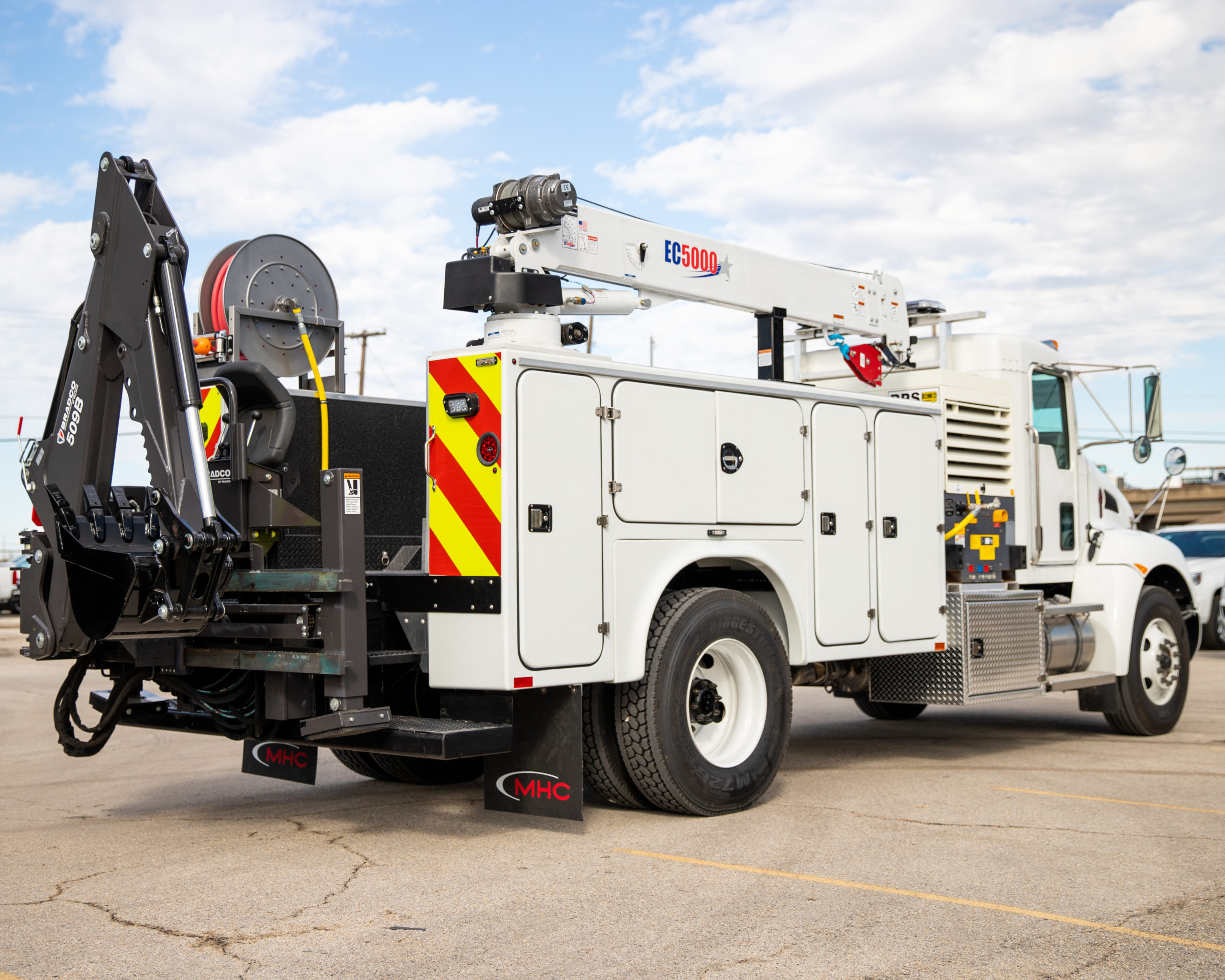Truck body manufacturer BrandFX is a top choice for American utility and telecommunications fleets. Made from advanced materials, BrandFX composite truck bodies are lightweight, and this gives them several advantages over traditional materials like steel and aluminum. Beyond clear advantages like zero corrosion, increased payload capacity and reduced maintenance costs, BrandFX offers an advantage in compliance with DOT regulations.
Lightweight advantage – DOT compliance
One key advantage of choosing BrandFX lightweight truck bodies is that vehicles stay well under key weight thresholds. By staying well under certain weight thresholds, fleets that choose BrandFX truck bodies are choosing to keep things simple – avoiding unintended weight infractions, additional taxes and other unnecessary expenses.
BrandFX – Three Lightweight Thresholds
Under 10,000 lbs. GVWR – there are no operational restrictions for a vehicle of this weight. At half the weight of aluminum and less than a quarter the weight of steel, many BrandFX- equipped fleets stay under this lightweight threshold.
Under 26,001 lbs. GCWR – While there are some operational restrictions for these vehicles, driving them does not require a CDL (Commercial Driver’s License). Many BrandFX- equipped utility trucks, including bucket trucks and digger derricks, stay under this lightweight threshold.
Under 33,000 lbs. GVWR – An additional 12% federal excise tax is collected upon the purchase and sale of any truck that weighs at or above 33,000 lbs. GVWR.
Beyond DOT compliance, BrandFX customers have found that there are many aesthetic and operational advantages to using advanced lightweight composite bodies.
Vehicle Weight Ratings
GVWR and GCWR are terms that are used to describe an operational vehicle to specify any weight limitations and restrictions. There are dozens of terms that describe weight restrictions. Some additional common terminology around vehicle weight include curb weight and dry weight and gross trailer weight. Curb weight is the weight of the vehicle without driver, passengers or cargo. Dry weight can be defined as curb weight, minus any consumables, including fuel, engine oil and other fluids.
GVWR – Gross Vehicle Weight Rating is defined by the National Highway Traffic Safety Association (NHTSA) as “the maximum operating weight of a vehicle, including the vehicle’s chassis, body, engine, engine fluids, fuel, accessories, driver, passengers and cargo, excluding that of any trailers.”
GCWR – Gross Combined Weight Rating is defined by the National Highway Traffic Safety Association (NHTSA) as “the maximum allowable combined mass of a road vehicle, the passengers and cargo in the tow vehicle, plus the mass of the trailer and cargo in the trailer.”
BrandFX and DOT Compliance – Summary
Truck bodies that are built by BrandFX enable DOT compliance. Exceptionally strong and much lighter than aluminum, BrandFX truck bodies enable vehicles to stay under crucial weight thresholds. For some smaller businesses and larger fleet organizations, lighter-weight truck bodies may enable different chassis choices. Choosing a smaller chassis can make a massive difference to a bottom line, and it can make a big difference in terms of staying compliant with DOT regulations. By manufacturing a much lighter weight truck body, BrandFX is able to save companies money and time in several unexpected ways.
Contact your BrandFX representative here.
